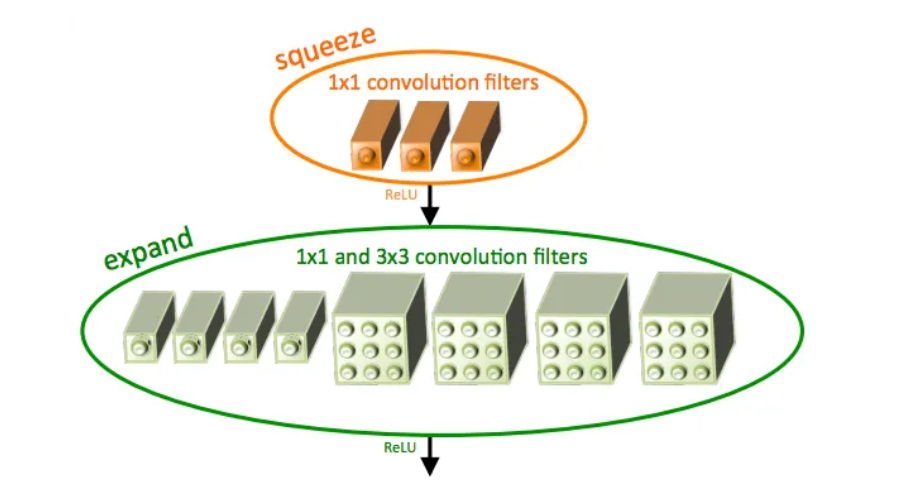
In neural networks, filters usually refer to the convolution kernels in convolutional neural networks. The convolution kernel is a small matrix used to perform convolution operations on the input image to extract features in the image. The convolution operation can be regarded as a filtering operation. By performing a convolution operation on the input data, the spatial structure information in the data can be captured. This operation is widely used in the fields of image processing and computer vision, and can be used for tasks such as edge detection, feature extraction, and target recognition. By adjusting the size and weight of the convolution kernel, the characteristics of the filter can be changed to adapt to different feature extraction needs.
In a convolutional neural network, each convolutional layer contains multiple filters, and each filter is responsible for extracting different features. These features can be used to identify objects, textures, edges and other information in images. When training a neural network, the weights of the filters are optimized so that the neural network can better identify features in the input image.
In addition to filters in convolutional neural networks, there are other types of filters, such as pooling filters and local response normalization filters. The pooling filter downsamples the input data to reduce the data dimension and improve computing efficiency. The local response normalization filter enhances the sensitivity of the neural network to small changes in the input data. These filters help the neural network better understand the characteristics of the input data and improve performance.
How neural network filters work
In neural networks, filters refer to the convolution kernels in convolutional neural networks. Their role is to perform convolution operations on input data to extract features in the data. The convolution operation is essentially a filtering operation. By performing a convolution operation on the input data, we can capture the spatial structure information in the data. This operation can be viewed as a weighted summation of the convolution kernel and the input data. Through different filters, we can capture different characteristics of the data, thereby achieving effective processing and analysis of the data.
In a convolutional neural network, each convolutional layer contains multiple filters that can extract different features. The weights of these filters are optimized during training to enable the neural network to more accurately identify features in the input data.
Convolutional neural networks use multiple filters to extract multiple different features at the same time to understand the input data more comprehensively. These filters are key components of neural networks for tasks such as image classification and target detection.
What is the function of the neural network filter
The main function of the filter in the neural network is to extract features from the input data.
In a convolutional neural network, each convolutional layer contains multiple filters, and each filter can extract different features. By using multiple filters, convolutional neural networks are able to extract multiple different features simultaneously to better understand the input data. During the training process, the weights of the filters are continuously optimized so that the neural network can better identify features in the input data.
Filters play a vital role in deep learning. They can capture spatial structural information in the input data, such as features such as edges, texture, and shape. By stacking multiple convolutional layers, we can build a deep neural network to extract more high-level features, such as various attributes and relationships of objects. These features play an important role in tasks such as image classification, target detection, and image generation. Therefore, filters in neural networks play an important role in deep learning.
The size and step size of the neural network filter
The size and step size of the filter in the neural network are two important parameters in the convolutional neural network.
The size of the filter refers to the size of the convolution kernel, which is usually a square or rectangular matrix. In a convolutional neural network, each convolutional layer contains multiple filters, and each filter can extract different features. The size of the filter affects the receptive field of the convolution operation, that is, the size of the area where the convolution operation can see the input data. Usually, the size of the convolution kernel is a hyperparameter, and the optimal size needs to be determined through experiments.
The step size refers to the step size of the convolution kernel moving on the input data. The size of the step size determines the output size of the convolution operation. When the stride is 1, the output size of the convolution operation is the same as the input size. When the stride is greater than 1, the output size of the convolution operation shrinks. The step size is also a hyperparameter, and experiments are required to determine the optimal size.
Normally, the size and step size of the filter are two important parameters in the convolutional neural network, and they will directly affect the performance and computational efficiency of the neural network. When training a neural network, experiments are needed to determine the optimal filter size and step size to improve the performance of the neural network.
The above is the detailed content of Convolution kernel in neural network. For more information, please follow other related articles on the PHP Chinese website!
 解析二元神经网络的功能和原理Jan 22, 2024 pm 03:00 PM
解析二元神经网络的功能和原理Jan 22, 2024 pm 03:00 PM二元神经网络(BinaryNeuralNetworks,BNN)是一种神经网络,其神经元仅具有两个状态,即0或1。相对于传统的浮点数神经网络,BNN具有许多优点。首先,BNN可以利用二进制算术和逻辑运算,加快训练和推理速度。其次,BNN减少了内存和计算资源的需求,因为二进制数相对于浮点数来说需要更少的位数来表示。此外,BNN还具有提高模型的安全性和隐私性的潜力。由于BNN的权重和激活值仅为0或1,其模型参数更难以被攻击者分析和逆向工程。因此,BNN在一些对数据隐私和模型安全性有较高要求的应用中具
 探究RNN、LSTM和GRU的概念、区别和优劣Jan 22, 2024 pm 07:51 PM
探究RNN、LSTM和GRU的概念、区别和优劣Jan 22, 2024 pm 07:51 PM在时间序列数据中,观察之间存在依赖关系,因此它们不是相互独立的。然而,传统的神经网络将每个观察看作是独立的,这限制了模型对时间序列数据的建模能力。为了解决这个问题,循环神经网络(RNN)被引入,它引入了记忆的概念,通过在网络中建立数据点之间的依赖关系来捕捉时间序列数据的动态特性。通过循环连接,RNN可以将之前的信息传递到当前观察中,从而更好地预测未来的值。这使得RNN成为处理时间序列数据任务的强大工具。但是RNN是如何实现这种记忆的呢?RNN通过神经网络中的反馈回路实现记忆,这是RNN与传统神经
 计算神经网络的浮点操作数(FLOPS)Jan 22, 2024 pm 07:21 PM
计算神经网络的浮点操作数(FLOPS)Jan 22, 2024 pm 07:21 PMFLOPS是计算机性能评估的标准之一,用来衡量每秒的浮点运算次数。在神经网络中,FLOPS常用于评估模型的计算复杂度和计算资源的利用率。它是一个重要的指标,用来衡量计算机的计算能力和效率。神经网络是一种复杂的模型,由多层神经元组成,用于进行数据分类、回归和聚类等任务。训练和推断神经网络需要进行大量的矩阵乘法、卷积等计算操作,因此计算复杂度非常高。FLOPS(FloatingPointOperationsperSecond)可以用来衡量神经网络的计算复杂度,从而评估模型的计算资源使用效率。FLOP
 模糊神经网络的定义和结构解析Jan 22, 2024 pm 09:09 PM
模糊神经网络的定义和结构解析Jan 22, 2024 pm 09:09 PM模糊神经网络是一种将模糊逻辑和神经网络结合的混合模型,用于解决传统神经网络难以处理的模糊或不确定性问题。它的设计受到人类认知中模糊性和不确定性的启发,因此被广泛应用于控制系统、模式识别、数据挖掘等领域。模糊神经网络的基本架构由模糊子系统和神经子系统组成。模糊子系统利用模糊逻辑对输入数据进行处理,将其转化为模糊集合,以表达输入数据的模糊性和不确定性。神经子系统则利用神经网络对模糊集合进行处理,用于分类、回归或聚类等任务。模糊子系统和神经子系统之间的相互作用使得模糊神经网络具备更强大的处理能力,能够
 改进的RMSprop算法Jan 22, 2024 pm 05:18 PM
改进的RMSprop算法Jan 22, 2024 pm 05:18 PMRMSprop是一种广泛使用的优化器,用于更新神经网络的权重。它是由GeoffreyHinton等人在2012年提出的,并且是Adam优化器的前身。RMSprop优化器的出现主要是为了解决SGD梯度下降算法中遇到的一些问题,例如梯度消失和梯度爆炸。通过使用RMSprop优化器,可以有效地调整学习速率,并且自适应地更新权重,从而提高深度学习模型的训练效果。RMSprop优化器的核心思想是对梯度进行加权平均,以使不同时间步的梯度对权重的更新产生不同的影响。具体而言,RMSprop会计算每个参数的平方
 浅层特征与深层特征的结合在实际应用中的示例Jan 22, 2024 pm 05:00 PM
浅层特征与深层特征的结合在实际应用中的示例Jan 22, 2024 pm 05:00 PM深度学习在计算机视觉领域取得了巨大成功,其中一项重要进展是使用深度卷积神经网络(CNN)进行图像分类。然而,深度CNN通常需要大量标记数据和计算资源。为了减少计算资源和标记数据的需求,研究人员开始研究如何融合浅层特征和深层特征以提高图像分类性能。这种融合方法可以利用浅层特征的高计算效率和深层特征的强表示能力。通过将两者结合,可以在保持较高分类准确性的同时降低计算成本和数据标记的要求。这种方法对于那些数据量较小或计算资源有限的应用场景尤为重要。通过深入研究浅层特征和深层特征的融合方法,我们可以进一
 蒸馏模型的基本概念Jan 22, 2024 pm 02:51 PM
蒸馏模型的基本概念Jan 22, 2024 pm 02:51 PM模型蒸馏是一种将大型复杂的神经网络模型(教师模型)的知识转移到小型简单的神经网络模型(学生模型)中的方法。通过这种方式,学生模型能够从教师模型中获得知识,并且在表现和泛化性能方面得到提升。通常情况下,大型神经网络模型(教师模型)在训练时需要消耗大量计算资源和时间。相比之下,小型神经网络模型(学生模型)具备更高的运行速度和更低的计算成本。为了提高学生模型的性能,同时保持较小的模型大小和计算成本,可以使用模型蒸馏技术将教师模型的知识转移给学生模型。这种转移过程可以通过将教师模型的输出概率分布作为学生
 SqueezeNet简介及其特点Jan 22, 2024 pm 07:15 PM
SqueezeNet简介及其特点Jan 22, 2024 pm 07:15 PMSqueezeNet是一种小巧而精确的算法,它在高精度和低复杂度之间达到了很好的平衡,因此非常适合资源有限的移动和嵌入式系统。2016年,DeepScale、加州大学伯克利分校和斯坦福大学的研究人员提出了一种紧凑高效的卷积神经网络(CNN)——SqueezeNet。近年来,研究人员对SqueezeNet进行了多次改进,其中包括SqueezeNetv1.1和SqueezeNetv2.0。这两个版本的改进不仅提高了准确性,还降低了计算成本。SqueezeNetv1.1在ImageNet数据集上的精度


Hot AI Tools

Undresser.AI Undress
AI-powered app for creating realistic nude photos

AI Clothes Remover
Online AI tool for removing clothes from photos.

Undress AI Tool
Undress images for free

Clothoff.io
AI clothes remover

AI Hentai Generator
Generate AI Hentai for free.

Hot Article

Hot Tools

Zend Studio 13.0.1
Powerful PHP integrated development environment

Dreamweaver CS6
Visual web development tools

EditPlus Chinese cracked version
Small size, syntax highlighting, does not support code prompt function

ZendStudio 13.5.1 Mac
Powerful PHP integrated development environment

SublimeText3 Linux new version
SublimeText3 Linux latest version







